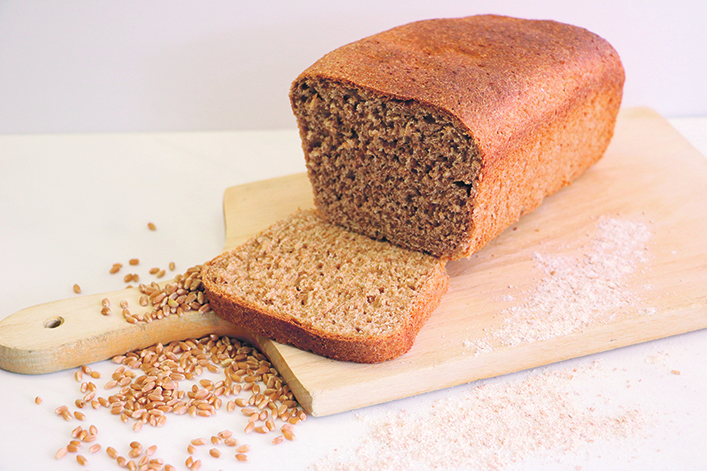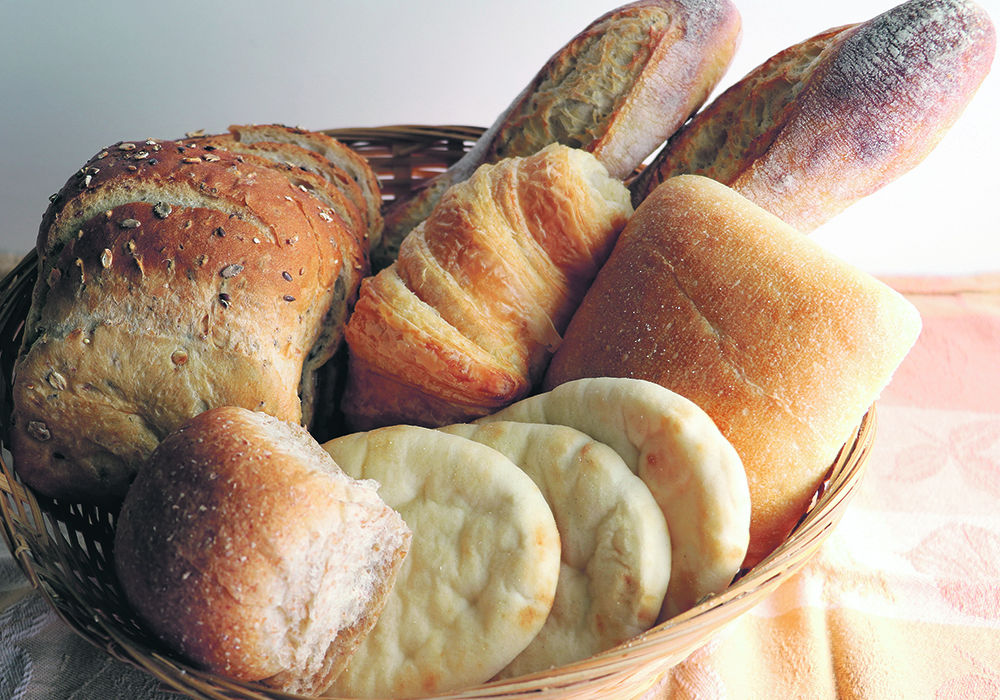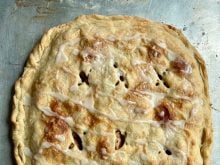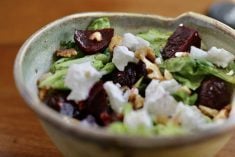It required luck, determination, disappointment and research for Canadian prairie farmers to develop their reputation as consistent producers of high-quality wheat ideal for bread making.
In the late 1800s, Canadian homesteaders often brought bags of seeds with them for planting. Unfortunately, these seeds usually were not suited to the harsh prairie climate, early frosts, plant diseases and pests, and they were often low yielding and of poor baking quality.
The Agriculture Canada document, “From a single seed — Tracing the Marquis Wheat Success Story in Canada to its Roots in the Ukraine,” is the story of David Fife of Otonabee, Ont., who in 1842 asked a friend in Glasgow, Scotland, to send him some wheat seeds.
Read Also

Wanuskewin is on track to become Saskatchewan’s first United Nations’ designated World Heritage Site
The purpose of Wanuskewin is to advance the understanding of the evolving cultures of northern Plains Indigenous peoples, a UNESCO designation would help that goal.
He received some wheat obtained from a cargo direct from Dantzic, the German port of Danzig, now Gdansk, Poland. Fife planted the seeds in the spring and only one kernel grew that produced three heads of wheat. It was concluded the other seeds had been winter wheat, which needed a time of winter cold to grow to maturity.
One version of the story has Fife’s wife rescuing the precious stalk of wheat from the family cow, after which Fife saved the seeds and planted them the following year. All his neighbours suffered losses from rust but his seeds were rust free. He continued to multiply the seeds and share them.
Almost 20 years later, in 1860, J.W. Clarke, a Wisconsin farmer, harvested a bumper crop of Red Fife wheat averaging about 36 bushels per acre. He was so pleased that he wrote a letter to The Country Gentleman and Cultivator magazine describing his success and recommending the new variety. He noted the red-coloured wheat was named after David Fife, the originator of the wheat and farmer from Otonabee.
In 1870, the invention of steel rollers to mill wheat made it possible to grind hard spring wheats into flours that were as good as flours milled from softer winter wheats. Suddenly, there was a demand throughout North America and on world markets, and demand for Red Fife seed in Canada increased.
In the early 1880s, to facilitate and improve the wheat harvest, the Canadian government permitted farmers to import Red Fife into Canada duty-free from the United States and the Canadian Pacific Railway allowed farmers to transport it free of charge.
After 1882, Red Fife displaced all other varieties and became the standard wheat in Western Canada. It was widely known as the world’s best spring wheat because of its high productivity and excellent milling and baking qualities. Its top grade, Manitoba No. 1 Hard, commanded the highest price on the British markets.
In 1886, pharmacist Dr. William Saunders became the first director of the Dominion Experimental Farm in Ottawa. He traveled the Prairies extensively and learned that, as good as Red Fife wheat was, it was often hit with August frosts. An earlier maturing variety was needed.
Saunders imported different wheat varieties from around the world. After growing and comparing them to Red Fife, all were inferior in some way. A new plan was developed to cross Red Fife with other wheats to develop new varieties that met the requirements of the Canadian climate.
In 1904, a European merchant sent Saunders a sample of Galician (Halychanka) wheat. Galicia lies about 480 kilometres inland from Danzig. Saunders recognized that this wheat was very much like Red Fife. He did a comparison of the two and they proved to be identical at all stages of growth, as well as when the grains were harvested and milled.
Saunders announced in 1905 to the Select Standing Committee on Agriculture and Colonization in Parliament that the successfully germinated kernel of wheat on Fife’s farm was a kernel of this Galician spring wheat, accidentally present in the cargo of winter wheat from Danzig, of which Fife had received a sample.
By 1903, grain research was headed by Saunders’ son, Dr. Charles Saunders. In 1904, he discovered a new variety of wheat called Marquis. It was a cross between the early-ripening Indian wheat Hard Red Calcutta and Red Fife that his brother, A.P. Saunders, had made in 1892 at the Experimental Farm in Agassiz, B.C.
During the winter of 1903-04, Saunders lacked proper milling and baking facilities so he chose to use the time-tested method of assessing wheat kernels. He would take a few grains from each stalk, chew them and decide on their probable flour and bread quality on the basis of the dough created in his mouth.
Marquis was distributed to farmers in spring 1909. The seed quickly became popular because it matured three to four days before Red Fife, had excellent yield and even better milling and baking qualities. It is classified as a wheat of the Red Fife group.
Marquis is not resistant to rust, but because it ripens earlier, it is ready for harvest before rust development and so can be said to avoid rust. Also, because it ripens faster, it can grow farther north than Red Fife, both important properties.
Today, Canadian prairie farmers predominantly produce red spring wheat that has a high protein content for superior milling, bread and noodle making, traits that trace back to Red Fife. That variety and its successors, including Marquis and many later varieties, were essential for the settlement and development of the Canadian Prairies and the growth of Canada’s agriculture industry.
Now Canada is the world’s fourth-largest producer of wheat, with about 21.7 million tonnes grown on 22.8 million acres, according to Statistics Canada in 2021. Wheat exports in that year were worth $8.3 billion.
Red Fife wheat has almost been lost in the abundance of new varieties. Some prairie organic farmers grow small quantities and market it to artisanal bakeries such as the Night Oven in Saskatoon. Bryn Rawlyk, owner and baker, locally sources organically grown grains that he grinds for use in his whole grain sourdough breads.
Whole grain flours contain 100 per cent of the grain kernel. In Canada, whole wheat flour is not considered whole grain because under Canadian regulations, up to five per cent of the wheat kernel can be removed during the milling process.
The following recipe was printed in Emmie Oddie’s Jan. 12, 1967, Western Producer column. Mrs. Christianson of Kinistino, Sask., submitted the recipe and stated that it produced a fine textured, moist brown bread that sliced thinly without crumbling. She had her own stone mill and ground her own whole grain flour.
I made this recipe using stone ground Red Fife flour purchased from the Night Oven bakery and mixed the dough in a Bosch mixer using a dough hook.

Whole grain wheat bread
- 2 lge. tbsp. traditional yeast 30 mL
- 1/2 c. warm water 125 mL
- 1 tbsp. sugar 15 mL
- 1 c. milk, scalded 250 mL
- 1/2 c. honey 125 mL
- 2 eggs
- 1 tsp. cinnamon 5 mL
- 1 tsp. salt 5 mL
- 1 1/2 c. warm potato water 375 mL
- 3 c. whole grain flour 750 mL
- 1/2 c. vegetable oil 125 mL
- 1 c. raisins (optional) 250 mL
- additional whole grain flour (2 – 3 c.) 500 – 750 mL
Add yeast to warm water and sugar, let stand 10 minutes.
Heat milk in saucepan just until steam is rising and small bubbles form around the edge. Remove from heat. Add honey, stir to melt. Cool.
When milk is cool, beat in eggs, cinnamon and salt. Stir in yeast mixture and potato water.
Add three cups whole wheat flour and stir well.
Add oil and raisins, if using.
Add enough whole wheat flour to make a soft, elastic dough, but not stiff.
Grease hands and knead about 10 minutes.
Cover and let rise in warm place until doubled in bulk, grease hands and knead again five minutes, and let rise again until doubled in bulk.
Divide into three loaves and put in pans in warm place. Don’t let it rise too much. It needs careful watching at this point.
Place a cake pan half full of hot water in the oven to provide moisture while baking.
Preheat oven to 400 F (200 C), add bread and bake for 10 minutes, reduce heat to 350 F (180 C) for the rest of the baking time of about 20-25 minutes. Bread is done when internal temperature is about 185 F (85 C).
After bread cools store in plastic bags in refrigerator or freezer.
Betty Ann Deobald is a home economist from Rosetown, Sask., and a member of Team Resources. Contact: team@producer.com.
















